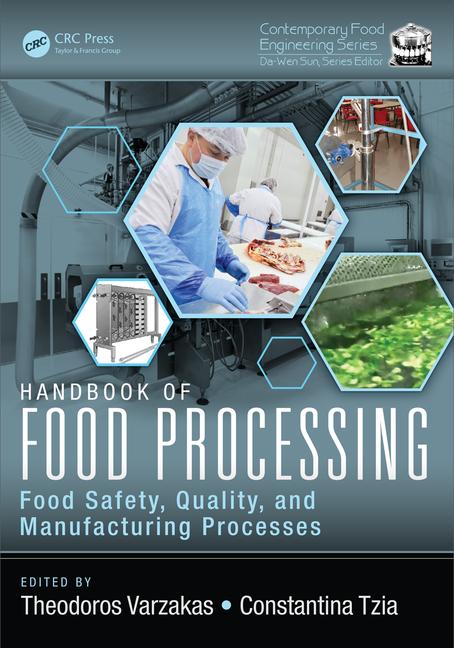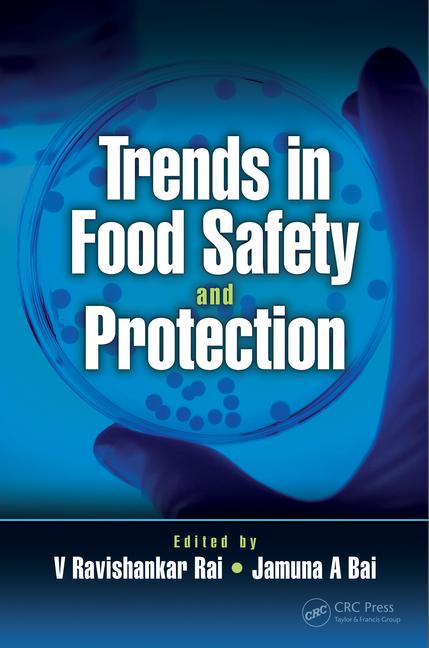Top Ten Food Safety Innovations of 2024

Image credit: gar13 via Freepik
Many advancements in food safety science and technology were seen in 2024, from new detection methods for chemical and microbiological contaminants, to novel processing technologies that improve the safety of foods, to preharvest interventions for microbial risks, and beyond. With so many innovations reported throughout the year, it was difficult to choose only ten to highlight—so this year’s Top Ten Food Safety Innovations list was chosen based on which discoveries and technologies attracted the most attention from Food Safety Magazine readers.
Highlighted below are the ten food safety advancements that excited our audience the most, in descending order. Links to detailed coverage about each of the advancements are included at the end of every section.
1. Scientists Develop Test That Detects PFAS in Food Packaging, Water, Soil in Under Three Minutes
Researchers at the New Jersey Institute of Technology (NJIT) developed a fast and highly sensitive method for detecting toxic per- and poly-fluoroalkyl substances (PFAS) in food packaging, water, and soil samples. Using paper spray mass spectrometry (PS-MS), the method delivers results in under three minutes, significantly faster than current testing methods. The technique is 10–100 times more sensitive than standard liquid chromatography/mass spectrometry, as it is capable of detecting PFAS down to parts-per-trillion levels. The method’s speed and sensitivity offer potential for food safety testing in the near-term, and in the long-term, the method could support ongoing efforts to remediate PFAS contamination.
Explore the science behind this innovative approach to PFAS detection here.
2. Scientist Discovers PFAS-Eating Microbes That Could Clean Contaminated Drinking Water
A team of environmental engineers from the University of California, Riverside (UC Riverside) has discovered bacteria capable of degrading certain PFAS in contaminated drinking water. These bacteria, belonging to the genus Acetobacterium, are found in wastewater environments globally and can break the strong carbon-fluorine bonds that enable PFAS to persist in the environment. The researchers found that Acetobacterium can specifically defluorinate unsaturated PFAS compounds by breaking the carbon-fluorine bonds, a process known as reductive defluorination.
The UC Riverside team were also able to pinpoint the specific enzymes in Acetobacterium that facilitate this process, opening the door to new possibilities for using microbes to break down PFAS in contaminated environments, potentially offering a more cost-effective and eco-friendly alternative to chemical treatments. By injecting the appropriate bacteria into contaminated groundwater, this biological remediation technique could help eliminate PFAS pollutants before they reach drinking water sources.
Uncover the potential of this alternative PFAS remediation technique here.
3. EPA Approves First Antimicrobial Treatment of Foodborne Pathogens in Preharvest Agricultural Water
In November 2024, the U.S. Environmental Protection Agency (EPA) approved the first-ever antimicrobial treatment for foodborne pathogens in preharvest agricultural water, marking a significant milestone for food safety. The registered product, SANIDATE 12.0, is designed to reduce harmful pathogens such as Escherichia coli and Salmonella in water applied to crops before harvest. This achievement follows a collaborative effort between EPA and the U.S. Food and Drug Administration (FDA) to develop a new efficacy protocol that guides the registration of antimicrobial treatments for agricultural water.
The approval of the treatment provides farmers with a new option for enhancing food safety. EPA and FDA hope this approval will lead to additional registrations using the revised protocol, offering more tools to combat pathogens in agricultural water and protect public health.
Read more about the precedent-setting SANIDATE 12.0 and the EPA–FDA registration protocol for the registration of preharvest agricultural water antimicrobial treatments here.
4. USDA Develops Egg Pasteurization Technology That Rapidly Kills 99.999 Percent of Salmonella
Researchers at the U.S. Department of Agriculture’s Agricultural Research Service (USDA-ARS) developed a new thermal pasteurization method using radio frequency (RF) technology that significantly reduces Salmonella in intact eggs. The method works much faster than traditional thermal pasteurization, which can take more than 57 minutes, and does not affect the quality of eggs. In contrast, the novel RF process only takes 24 minutes to reduce Salmonella by 99.999 percent, effectively inactivating pathogens with minimal time and effort. ARS researchers are continuing to refine the technology, with plans to make it commercially available in the near future.
Find out how USDA-ARS’ Salmonella-inactivating RF method works here.
5. In-Field Rapid Test Detects Fecal Contamination of Produce with Near-Total Accuracy
Researchers at Purdue University developed a portable, paper-based biosensor using loop-mediated isothermal amplification (LAMP) technology to rapidly detect fecal contamination in produce fields with 90–100 percent accuracy. The assay kit, the first of its kind to be deployed in-field, uses Bacteroidales as a fecal contamination marker, which is found in swine, poultry, and cattle waste.
The test kit includes a drop dispenser, paper-based devices, and a heating imager. After swabbing a sample, users add it to the drop dispenser, which dispenses liquid onto a paper preloaded with DNA-detection compound. The paper device is loaded into a heating imager for analysis, which can reveal contamination levels within an hour. The amount of Bacteroidales present indicates the level of food safety risk. A patent application has been submitted for the technology, and licensing of the technology has been issued to a startup company that is raising capital for commercialization.
Learn more about the innovative in-field rapid test here.
6. Researchers Achieve Significant Reduction of Mycotoxins on Grains Using Cold Plasma Treatment
Researchers at the University of Alberta have developed an innovative solution to reduce mycotoxin contamination in grains using atmospheric cold plasma (ACP) technology. In the study, ACP—applied in ionized gas and liquid forms to contaminated barley and wheat—successfully reduced mycotoxin levels by 54 percent. The researchers emphasized that ACP is a rapid, sustainable process, which requires only air to generate the plasma, and leaves no chemical residues on the grains.
The team also developed a plasma-steeping technology for the barley malting industry, which involves the use of plasma-activated water to steep barley. This approach not only reduced deoxynivalenol contamination, but also improved seed germination by 10–13 percent due to enhanced water absorption properties. The technology also decontaminates water, making it reusable for food processing. Both ACP and plasma-steeping technologies hold promise for commercialization and are available for licensing.
Read more about the power of plasma here.
7. Automated Assay Jointly Developed by FDA, Rheonix Detects Low Levels of Cyclospora in Produce
A joint FDA–industry study confirmed the effectiveness of an assay in detecting Cyclospora cayetanensis in high-risk produce like herbs, leafy greens, and berries. The Rheonix C. cayetanensis assay has been shown to reliably detect low levels of oocysts. Developed under a Research Collaboration Agreement (RCA), the assay integrates DNA isolation, PCR, hybridization, and results reporting, reducing hands-on time per 24-sample run by approximately four hours.
The RCA, established in February 2023, is part of FDA’s Cyclospora Prevention, Response, and Research Action Plan, which aims to advance tools for detecting C. cayetanensis in produce, soil, and agricultural water. The Rheonix assay incorporates genetic targets developed by FDA and also aligns with U.S. Centers for Disease Control and Prevention (CDC) recommendations to broaden detection capabilities for other Cyclospora species of public health relevance.
Read about Rheonix's C. cayetanensis assay here.
8. Onsite Detection of Multiple Foodborne Bacteria Achieved Within One Hour, Using Handheld Device
Researchers from Osaka Metropolitan University developed a handheld electrochemical biosensor capable of rapidly and simultaneously detecting multiple foodborne bacteria, with results sent directly to a smartphone app. The device successfully identified E. coli and Staphylococcus aureus in real-world samples onsite in under an hour—significantly faster than traditional culture-based methods, which can take days. Looking ahead, the researchers plan to expand the device's capabilities to detect additional bacterial species. This breakthrough allows for efficient, portable food safety monitoring without the need for laboratory-based analysis.
Explore the science behind this innovative device here.
9. Wastewater Monitoring Can Aid Foodborne Illness Surveillance, Study Shows
Researchers at Penn State University demonstrated the effectiveness of wastewater monitoring for foodborne pathogen surveillance by successfully isolating Salmonella from wastewater samples and, using whole genome sequencing (WGS), genetically linking the wastewater isolates to isolates recovered from a known salmonellosis outbreak. Building on the success of wastewater monitoring during the COVID-19 pandemic, the researchers were inspired to explore its potential to complement traditional foodborne illness reporting systems.
Find out more details about the study here.
10. New Microscopic Detection Technique Reveals More Plastic in Bottled Water Than Previously Known
Rutgers Health and Columbia researchers developed a new microscopic technique using stimulated Raman scattering microscopy to detect nanoplastics in bottled water. The highly sensitive technique was able to reveal significantly higher levels of plastic particles in samples than previously estimated—approximately 10–100 times more than prior estimates based on larger microplastic sizes. The study also identified seven common types of plastics in the samples through a new data-driven algorithm that interpreted laser-based molecular signals.
See what else the new technique was able to discover here.
Looking for a reprint of this article?
From high-res PDFs to custom plaques, order your copy today!










